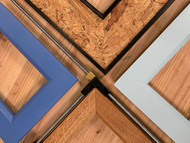Picture frames make great gifts and woodworkers of all skill levels can make one, even beginners. One of the harder parts of creating a frame is making the rabbets, the space that will hold the picture and glass in place. This is hard if you are just starting out or don't have the proper tools. However, Kelsey has a neat trick to bypass this altogether while still creating the proper space required to hold the picture in place. You will also learn to make your own mitre box, which will come in handy while you make those more complicated cuts.

Japanese Garden Tools Vs. American: What’s the Difference?
You may have seen Japanese gardening tools popping up more in stores and online. Sure, they’re… Read More


